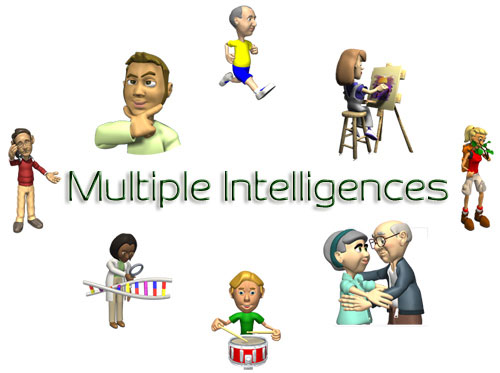Multiple Intelligences
According to Howard Gardner, an intelligence is the ability to solve problems or fashion products that are of consequence (or are valued) in a particular cultural setting or community (Gardner, 1993). The creation of a cultural product is crucial to such functions as capturing and transmitting knowledge or expressing one's views or feelings. In other words, intelligence, as defined by Gardner, is an ability to solve problems or create something that is valued. Intelligence can even be defined as a "talent." Gardner has stated in several interviews that if he'd titled his theory "Multiple Talents" it would never have created a stir (DiNozzi & Gardner, 1996). Essentially, a dominant intelligence is the way you are most comfortable demonstrating what you know.
Sensory preferences (KTAV) deal with the way participants take in information--the way information is processed. Multiple Intelligences (MI) deal with the way participants demonstrate their understanding.
Each of the eight intelligences covers a range of subcapacities: specific talents that fall under the category of that intelligence. Review the subcapacities listed as you click on each of the intelligences in the graphic below.

To be dominant in a particular intelligence, you don't have to be strong in every subcapacity, but simply be strong in a few subcapacities. Some people are highly Visual but are lousy at navigating. Some people are highly Musical-Rhythmic but can't play an instrument. These folks demonstrate other subcapacities within those intelligences, but not all of the subcapacities.
You most likely already have a feel for your own dominant intelligence just by considering which subcapacities sound most like you. Take a few moments now to consider your dominant MI. Find out more by using one of the following inventories:
Learn more about your intelligence and the use of MI in assessments by reviewing the reading, audio, and video clips provided in this module.
